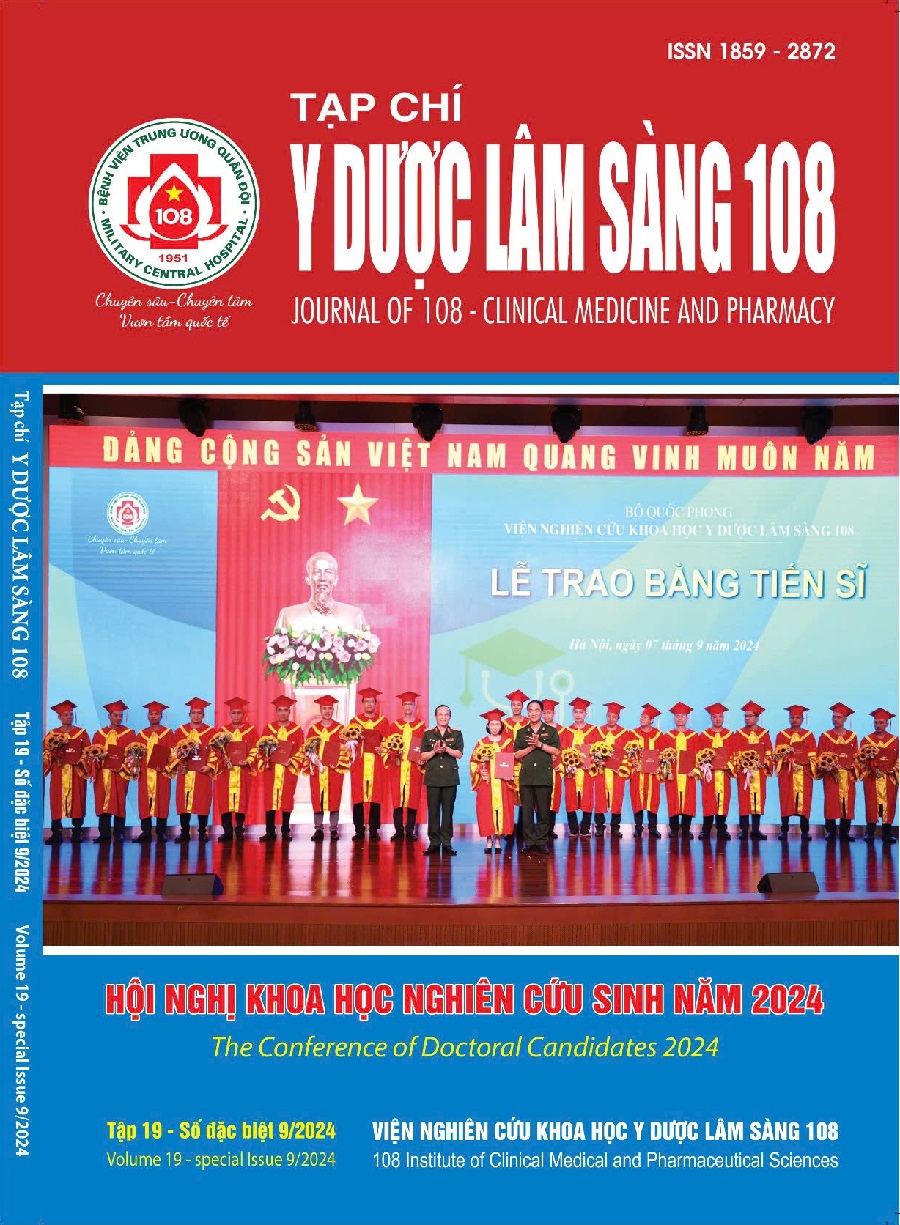Homeostasis model assessment (HOMA) of insulin resistance and related factors in psoriasis patients
Main Article Content
Keywords
Abstract
Objective: To compare the rate of insulin resistance assessed by the HOMA-IR index in psoriasis patients and control group. Subject and method: A cross-sectional study on 102 psoriasis patients and 51 healthy controls at Ho Chi Minh City Hospital of Dermato-Venereology from February 2023 to August 2023. Psoriasis severity was assessed by BSA and PASI scores. Insulin resistance was assessed by the HOMA-IR index. Result: The HOMA-IR index in the psoriasis patients was higher than that in the control group (p<0.05). The rate of insulin resistance (HOMA-IR ≥ 2.5) in the psoriasis patients was 48%, three times higher than that in the control group (OR = 3, p=0.004). There was a positive, moderate correlation between HOMA-IR and BMI (r = 0.436, p<0.001); positive, weak correlation between HOMA-IR and waist circumference (r = 0.294, p=0.003) in the psoriasis patients. Conclusion: Psoriasis patients had a higher rate of insulin resistance than subjects without psoriasis; HOMA-IR was positively correlated with BMI and waist circumference.
Article Details
References
2. Bolognia Jean L, Schaffer Julie V (2018) Ceroni Lorenzo et al (2018) Dermatology. 4th ed. Elsevier Saunders: 138-160.
3. Armstrong AW, Read C (2020) Pathophysiology, clinical presentation, and treatment of psoriasis: A review. JAMA. 323(19): 1945-1960. doi: 10.1001/jama.2020.4006.
4. Elmets CA, Leonardi CL, Davis DMR et al (2019) Joint AAD-NPF guidelines of care for the management and treatment of psoriasis with awareness and attention to comorbidities. J Am Acad Dermatol. 80(4): 1073-1113. doi:10.1016/j.jaad.2018.11.058.
5. Boehncke WH, Boehncke S, Tobin AM, Kirby B (2011) The psoriatic march: A concept of how severe psoriasis may drive cardiovascular comorbidity. Exp Dermatol. 20(4): 303-307. doi:10.1111/j.1600-0625.2011.01261.x.
6. Arellano-Ruiz P, García-Hermoso A, Cavero-Redondo I, Pozuelo-Carrascosa D, Martínez-Vizcaíno V, Solera-Martinez M (2019) Homeostasis Model Assessment cut-off points related to metabolic syndrome in children and adolescents: A systematic review and meta-analysis. Eur J Pediatr 178(12): 1813-1822. doi:10.1007/s00431-019-03464-y.
7. Adebajo A, Boehncke WH, Gladman DD, Mease PJ, et al (2016) Psoriatic arthritis and psoriasis. Springer International Publishing. doi:10.1007/978-3-319-19530-8.
8. Mrowietz U, Kragballe K Reich K et al (2011) Definition of treatment goals for moderate to severe psoriasis: A European consensus. Arch Dermatol Res. 303(1): 1-10. doi:10.1007/s00403-010-1080-1.
9. Wardhana M, Adiguna MS, Nareswari PAD (2019) Positive correlation of psoriasis vulgaris severity and HOMA-IR. BaliDV 2(1): 17-20.
10. Bajaj S, Mandal S, Singh KG, Prajapati R (2020) Metabolic Diseases and Associated Complications in Patients with Psoriasis. J Assoc Physicians India 68(10):44-46.
11. Luan L, Han S, Wang H, Liu X (2015) Down-regulation of the Th1, Th17, and Th22 pathways due to anti-TNF-α treatment in psoriasis. Int Immunopharmacol. 29(2): 278-284. doi:10.1016/j.intimp.2015.11.005.
12. Frieder J, Ryan C (2016) Psoriasis and cardiovascular disorders. G Ital Dermatol Venereol. 151(6): 678-693.
13. Grozdev I, Korman N, Tsankov N (2014) Psoriasis as a systemic disease. Clin Dermatol 32(3): 343-350. doi:10.1016/j.clindermatol.2013.11.001.
14. Polic MV, Miskulin M, Smolic M et al (2018) Psoriasis severity-a risk factor of insulin resistance independent of metabolic syndrome. Int J Environ Res Public Health 15(7): 1486. doi:10.3390/ijerph15071486.
15. Boehncke S, Thaci D, Beschmann H et al (2007) Psoriasis patients show signs of insulin resistance. Br J Dermatol. 157(6): 1249-1251. doi:10.1111/j.1365-2133.2007.08190.x.
16. Wahrenberg H, Hertel K, Leijonhufvud BM, Persson LG, Toft E, Arner P (2005) Use of waist circumference to predict insulin resistance: Retrospective study. BMJ. 330(7504): 1363-1364. doi:10.1136/bmj.38429.473310.AE.
17. Frayn KN (2000) Visceral fat and insulin resistance--causative or correlative? Br J Nutr 83(1): 71-77. doi:10.1017/s0007114500000982.
 ISSN: 1859 - 2872
ISSN: 1859 - 2872
